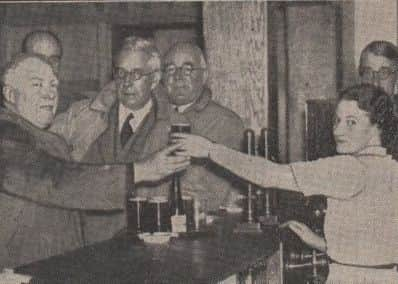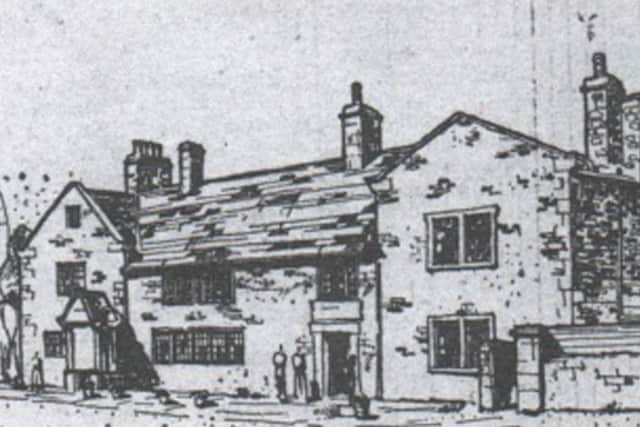Mirfield pub had reputed links to Robin Hood


Today its demolition wouldn’t have been allowed.
It would have been listed because it was Mirfield’s oldest pub dating back to the 1800s, and, of course, reputed to have links with Robin Hood.
But demolitions of this kind happened on a regular basis in those days and that is why a great deal of our local history has been lost forever.


Advertisement
Hide AdAdvertisement
Hide AdRemarkably, the pub was left standing, and in full use, while its replacement was being built just behind it, and drinks were being sold right up to the opening of the new one.
The demolition of the old was started almost immediately and the space left became the present car park.
It was no surprise to those fighting to save it that during its demolition, a great deal of local history was uncovered, history which hitherto was unknown, but too late, the bulldozers had got rid of it.
On the eve of its demolition, Mr Sam Brown, of “Aysgarth”, Station Road, Mirfield, a young architect studying in Leeds, did a sketch of the old pub.


Well done Mr Brown.
Advertisement
Hide AdAdvertisement
Hide AdSadly, there were few to mourn the loss of this ancient pub because most people were too charmed by the character of its spanking, new replacement. It was a case of – out with the old and in with the new.
The lounge, dining room, saloon bar and even the taproom of the new hotel had been beautifully panelled in light English oak from the Wye Valley.
The pub’s owners, Messrs Thomas Ramsden and Sons Ltd, spared no expense in the carrying out of the scheme.


There were many visitors at the opening who remarked that there were few town halls to equal it.
Advertisement
Hide AdAdvertisement
Hide AdWhen it opened, the first drink – a glass of Ramsden’s beer in prime condition – was drawn by Miss Lucy Sykes, and handed to Mr William Crowther, of Messrs Robinson and Crowther, of Cleckheaton, who had been responsible for the excavations, brickwork and masonry.
Brigadier-General Sir George Armytage, of Kirklees Hall, looked in at the opening, and there were many of the contractors and their craftsmen also present, as well as many of the great and good of Mirfield.
The Three Nuns had been a noted hostelry for over 200 years, and from 1822 to 1832, had been the meeting place of the Nelson of the Nile Lodge of Freemasons, founded at Batley in 1801.


In recognition of this, The Nelson of the Nile banner was reproduced in stained glass and inserted in the smoke-room window, and on the mantelpiece was hung a fine painting of the old Inn by Mr Chas Crossley, a Halifax artist.
Advertisement
Hide AdAdvertisement
Hide AdAlso it was promised that the mounting steps used by customers going to the inn on horseback centuries ago, would be preserved. I wonder if they were, and if they were, are they still there?
I’m sure some Mirfield reader will let me know.
Another link with the past, the old sign picturing three nuns, one of them reputed to be the sister of Robin Hood, painted by Jim Sayner, a local artist and sign-writer, was mounted as a panel in the new lounge.
Its place outdoors replaced by a stone carving over the main hotel entrance of the pub.
Are these pieces of Mirfield’s history still there? I don’t know, probably not because the pub has been changed yet again, and the name also.
Advertisement
Hide AdAdvertisement
Hide AdThe Nelson of the Nile Lodge was founded in 1801 in Batley, and moved to the Black Bull Hotel, Eastthorpe, Mirfield, in 1816.
Two years later, a transfer was made to the Freemasons Arms, Upper Hopton, and then removed to The Three Nuns, where it remained for ten years, before returning to Batley.
The pictures on this page are not the original ones, they are taken from old newspaper cuttings, and so I apologise in advance if they don’t reproduce too well. But at least they will be clear enough to show us what happened to the Three Nuns all those years ago.
Anyone with any more information or photographs of The Three Nuns, please contact me at [email protected].